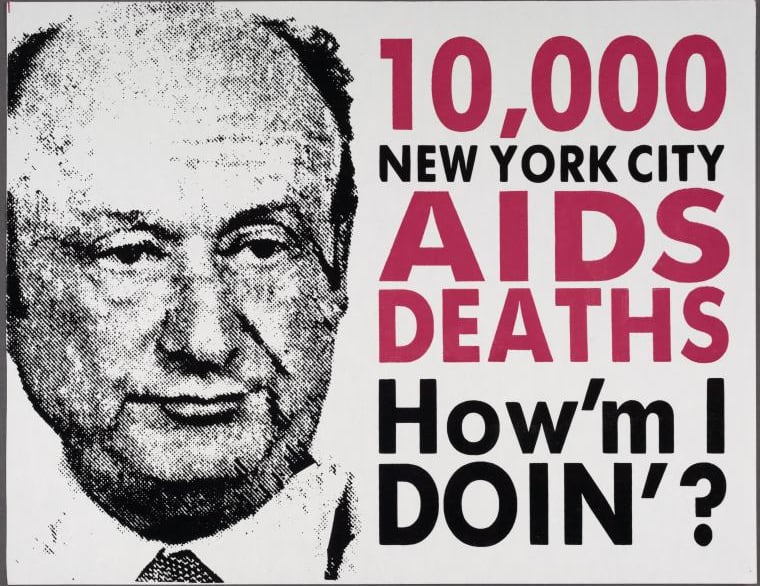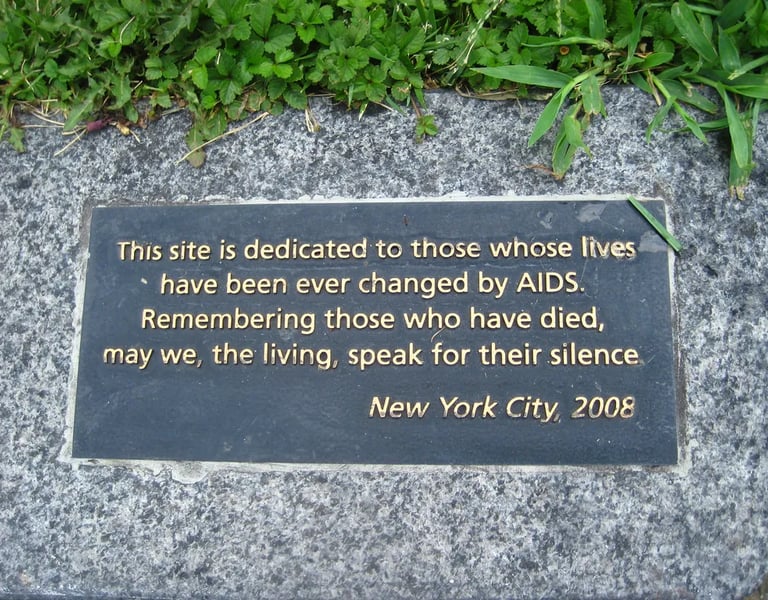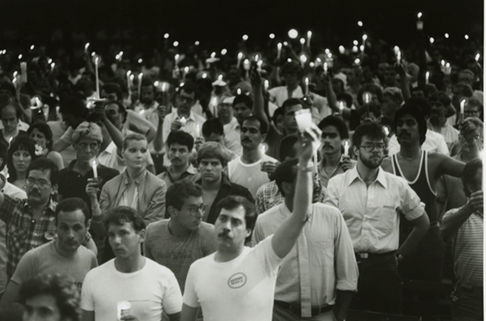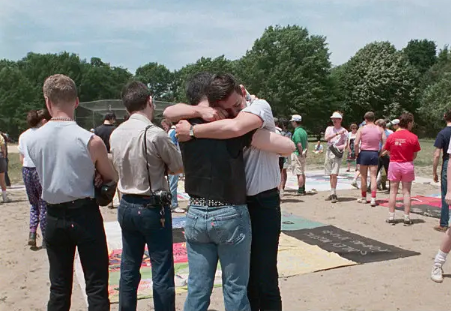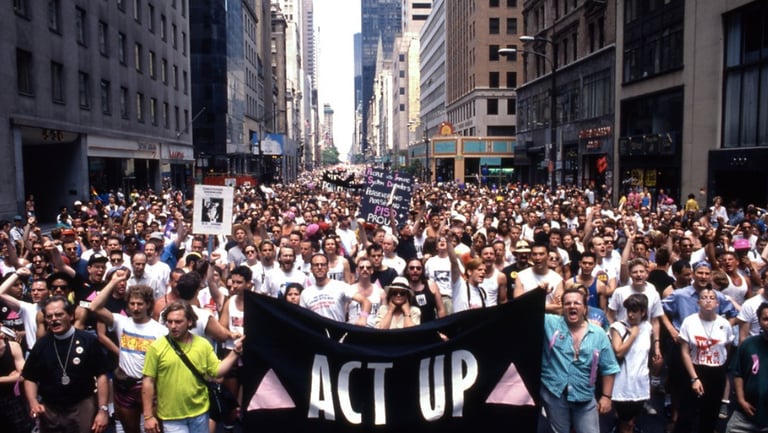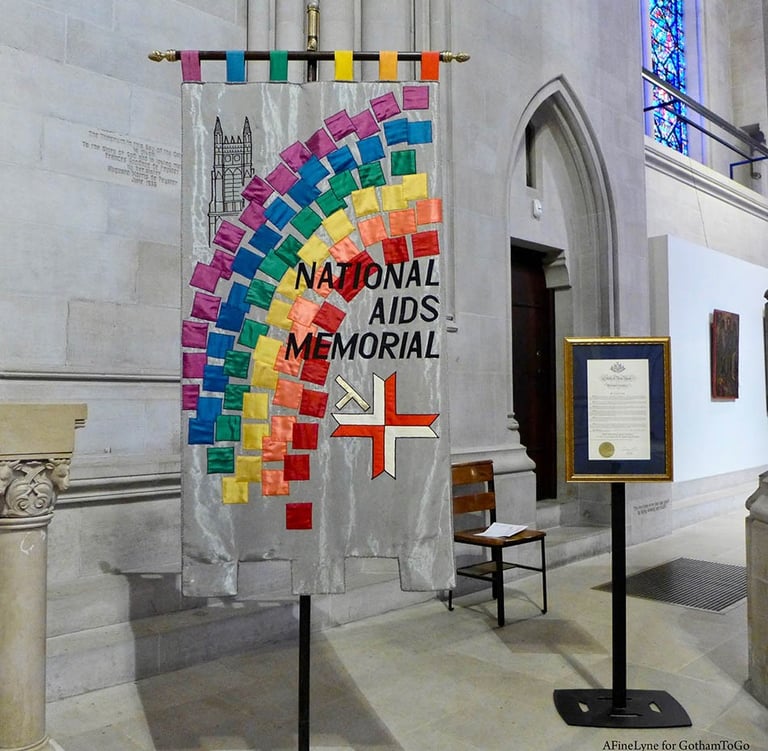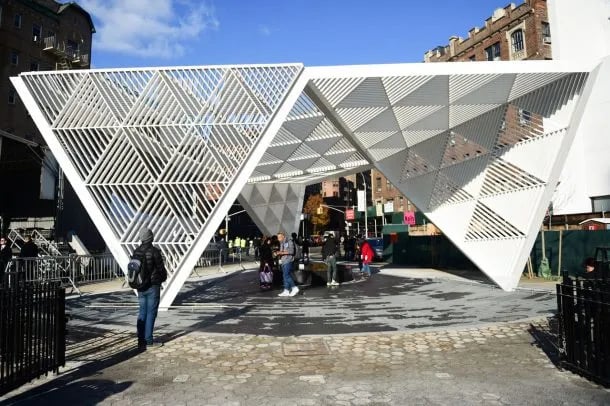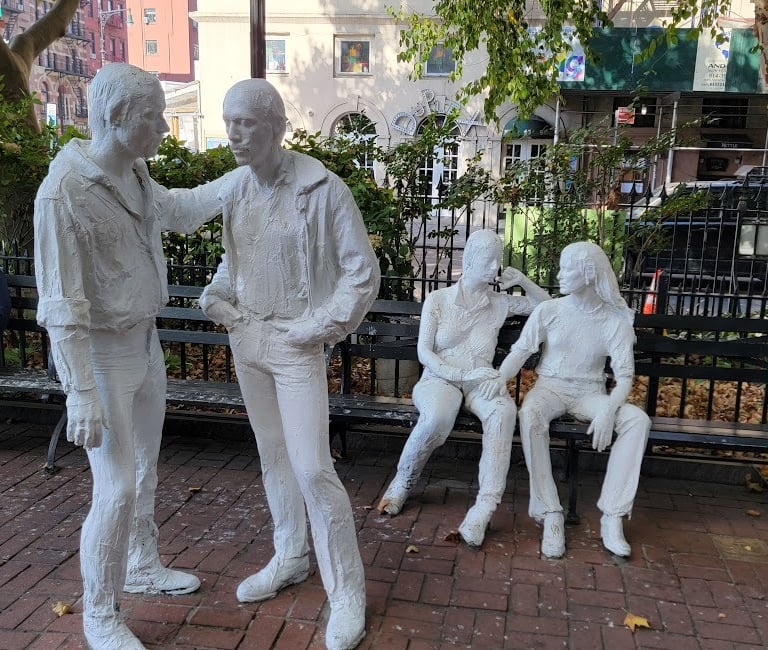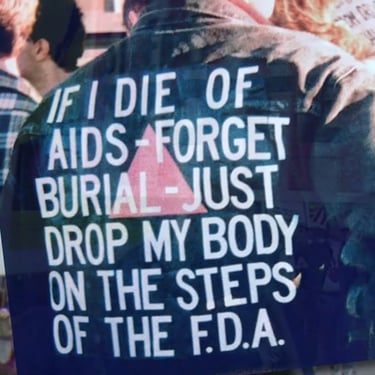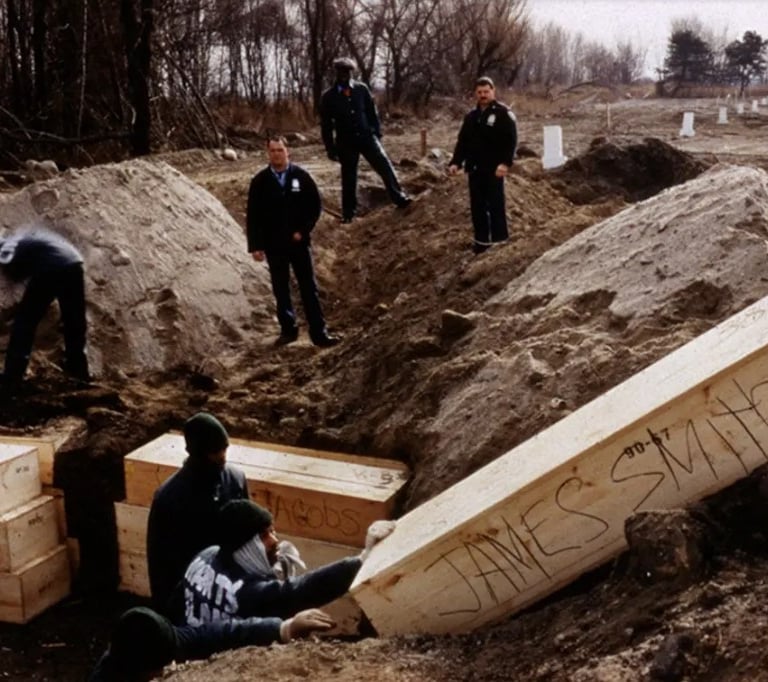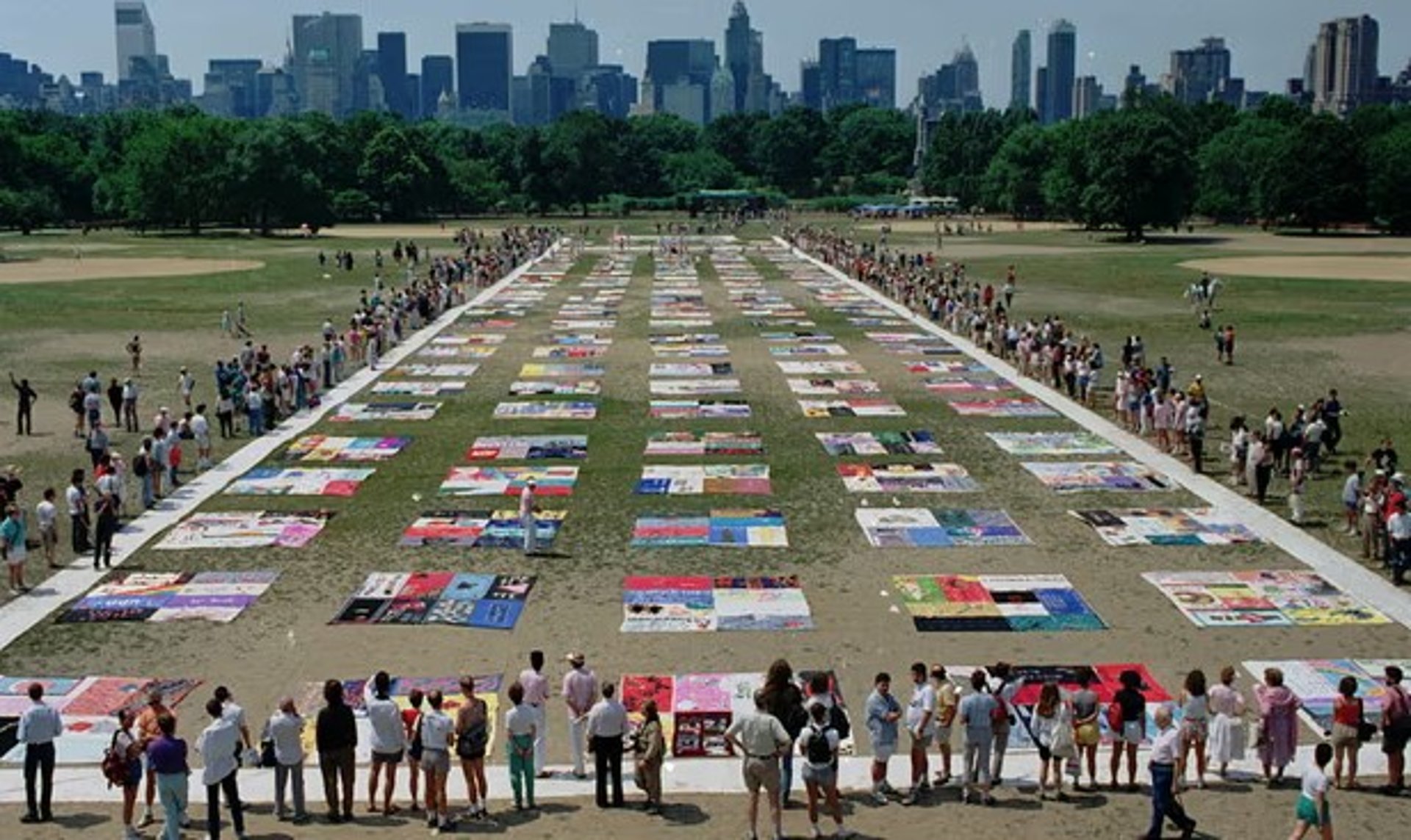
A PATCHWORK OF MEMORY
A
Living Memorial
to AIDS
in New York City
From Silence to Remembrance:
The Ongoing Story of HIV/AIDS
New York City was the epicenter of the AIDS crisis, and it remains central to how we remember, mourn, and honor those we lost. This site explores the history of AIDS memorialization in the city—through candlelight vigils, protest marches, the AIDS Memorial Quilt, and permanent monuments.
By tracing these stories, A Patchwork of Memory reveals how communities transformed grief into action, visibility, and remembrance. From the streets of the Village to Hart Island, from ephemeral vigils to enduring memorials, these histories remind us that AIDS is not only a story of loss, but also of resilience, activism, and community.
This project aims to preserve these histories and make them accessible to all, ensuring that the memories of those lost and the struggles of those who fought are never forgotten.
The AIDS Memorial at Hudson River Park in New York City. Photo by Joseph Golden.
Grief in the Streets: Candlelight Vigils and the Birth of AIDS Memorial Culture
In the early 1980s, as AIDS devastated New York City, grief spilled into the streets. Candlelight vigils, held outside hospitals, churches, and along Christopher Street, transformed private mourning into public memory. These gatherings marked the birth of AIDS memorial culture: fragile, fleeting, and deeply political. With each candle lit, communities demanded visibility, dignity, and justice, laying the groundwork for the memorial traditions that followed.
The Quilt Unfolds:
AIDS, Activism, and Memory in NYC
When the AIDS Memorial Quilt was first displayed in New York’s Central Park in 1988, it transformed personal grief into a public act of defiance. Each panel stitched a life into collective memory, turning fabric into testimony against silence and neglect. In New York, the Quilt reflected the city’s diversity—honoring women, people of color, immigrants, trans people, and the unhoused alongside white gay men—while also revealing who was left out of official memorial culture. The Quilt’s unfolding in the city was more than a memorial; it was activism made visible, a reminder that remembrance itself can be a form of resistance.
Pride Parades: From Celebration to Memorialization
As AIDS spread through New York City, Pride parades became more than celebrations of liberation—they became processions of mourning and defiance. Banners carried the names of the dead, moments of silence interrupted music and dancing, and activists transformed joy into a demand for recognition and justice. Pride in the 1980s held grief and celebration side by side, marking the parade route as both festival and memorial ground.
Permanent Memorials: Queer Memory in Public Space
The earliest permanent AIDS memorials in New York were often modest—plaques in local churches, books of remembrance in hospital chapels, or small dedications in neighborhood parks. They offered durable forms of mourning at a time when the city itself had not yet committed to remembering. Yet permanence proved fragile. Some of these memorials vanished as churches closed, hospitals shuttered, or urban spaces were redeveloped; others were rescued, relocated, or revived by new generations. Their shifting presence reminds us that even so-called permanent memorials are vulnerable, and that the fight to preserve queer memory in public space is ongoing.
Sacred Ground: The NYC AIDS Memorial
The New York City AIDS Memorial, dedicated in Greenwich Village in 2016, stands as the city’s first large-scale monument to the epidemic. Located near the former site of St. Vincent’s Hospital—the frontline of care during the crisis—it honors the more than 100,000 New Yorkers who died and the communities who fought for their lives. Its soaring steel canopy and engraved texts transform loss into a public space of reflection, visibility, and resilience. Decades in the making, the Memorial is both a tribute to those gone and a testament to the activism that demanded the city finally remember.
Stonewall National Monument and AIDS Commemoration
The Stonewall National Monument in Christopher Park honors the 1969 uprising that sparked the modern LGBTQ+ rights movement. Yet the same park also became a site of mourning during the AIDS crisis, hosting vigils, protest gatherings, and the quiet presence of those grieving in its shadows. Linking Stonewall to AIDS memorialization reveals a layered history: the fight for liberation and visibility did not end in 1969 but was redefined in the face of mass death and neglect. Today, the Monument stands not only for Stonewall but also as a reminder of the overlapping struggles that shaped queer New York, where pride and grief, resistance and remembrance, have always coexisted.
ACT UP and the Politics of Mourning
Founded in New York in 1987, ACT UP transformed mourning into militancy. While candlelight vigils and funerals made AIDS grief visible, ACT UP’s “politics of mourning” took that visibility further—into the streets, the halls of power, and the media spotlight. Political funerals, die-ins, and confrontational protests demanded accountability from government and industry, declaring that the dead would not be forgotten and the living would not be ignored. In ACT UP’s hands, grief became a strategy, remembrance became resistance, and mourning itself became a political act.
Hart Island: A Burial Ground at the Edge of Memory
Hart Island, New York City’s potter’s field, is the burial site of more than a million people who died without wealth, family recognition, or institutional support. During the AIDS crisis, hundreds of New Yorkers—many of them poor, stigmatized, or estranged from their families—were laid to rest there in anonymous mass graves. Long hidden from public view and maintained by incarcerated labor, Hart Island represents the city’s most haunting AIDS memorial: one built not by design but by neglect. Today, the island stands as both a site of loss and a reminder of how easily lives can be erased from history unless deliberately remembered.
Share Your Story
Your voice matters. If you have memories, photographs, or reflections connected to the AIDS crisis in New York City, we invite you to share them. Together we can preserve these histories and ensure they are never forgotten.
